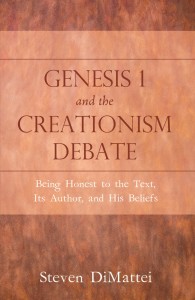Seldom do readers of the Bible actually think about the compositional nature of the text they hold in their hands. Many Jews and Christians are completely unaware that the Bible is composed of a vast collection of different texts, themselves composed from a variety of texts and traditions, all of which were written over a period of roughly one-thousand years, by varying authors, and under diverse historical circumstances and religious and political convictions. Many of the Bible’s books—or more precisely the texts and traditions that went into the composition of its books—went through lengthy periods of continual revision, often supplemented with other texts and traditions, and redrafted to suit an ever-changing audience’s political and religious needs. In today’s culture, most biblical enthusiasts merely invoke the name “the Bible” in a variety of contexts with little or no real knowledge of the nature of the biblical text itself. Those few who … Read more
Contradictions in the Bible
Identified verse-by-verse & explained using the most up-to-date scholarly information about the Bible, its texts, and the men who wrote them.
-
My Books
 "DiMattei’s book is a refreshing call both for biblical literacy and for intellectual honesty in dealing with the Bible" —John J Collins (Yale).
"DiMattei’s book is a refreshing call both for biblical literacy and for intellectual honesty in dealing with the Bible" —John J Collins (Yale).
“Genesis 1 and the Creationism Debate is an accessible and useful book for those who seek to understand why creationism is flawed on biblical grounds”—Hector Avalos (Iowa U).
-
Recent Posts
-
In Defense of Jesus:
A Challenge To Those Claiming To “Follow Jesus” (part I) -
Genesis 1 and the Creationism Debate:
Being Honest to the Text, Its Author, and His Beliefs - Did Moses Lie to Us? A Textual Journey (Part III)
- Did Moses Lie to Us? A Textual Journey (Part II)
- Did Moses Lie to Us? A Textual Journey (Part 1)
- Genesis 1:1-2:3 on Its Own Terms and in Its Own Historical and Literary Context
- Genesis 1:1-2 — not a Creation ex nihilo
- Genesis 1:3-5 — Day is Light
- Genesis 1:6-8 — Life Inside a Water Bubble
- Genesis 1:9-10 — The Creation of the Material Substance Earth, Not the Planet!
- Genesis 1:14-19 — The Creation of the Luminaries to Keep Yahweh’s Festivals
- Genesis 1:24-28 — Mankind, More than just an Animal
- Genesis 2:2-3 — Sacred Time Embedded into the Creation
- Genesis 2:4b-25 on Its Own Terms and in Its Own Historical and Literary Context
- Genesis 2:4b — Observing Thematic and Stylistic Differences
- Genesis 2:5 — Man and Rain: Prerequisites to the Creation of Plants
- Genesis 2:6-7 — Yahweh Molds an Earthling!
- Genesis 2:18-20 — Man and the Animals from the Ground, Woman from Man
- Matthew’s Jesus and the Criterion of Righteousness
- Introduction to Forthcoming Contradictions in the Bible
- Style, Vocabulary, and Message
- The Book of Deuteronomy: A Brief Introduction
- Using Moses to Rewrite History
- The Bible’s Contradictory Stories and “Histories”
- How do we know that the biblical writers were not writing history?
-
In Defense of Jesus:
Recent Comments
No comments to display
Posts by Category
Archives
Follow Me!




